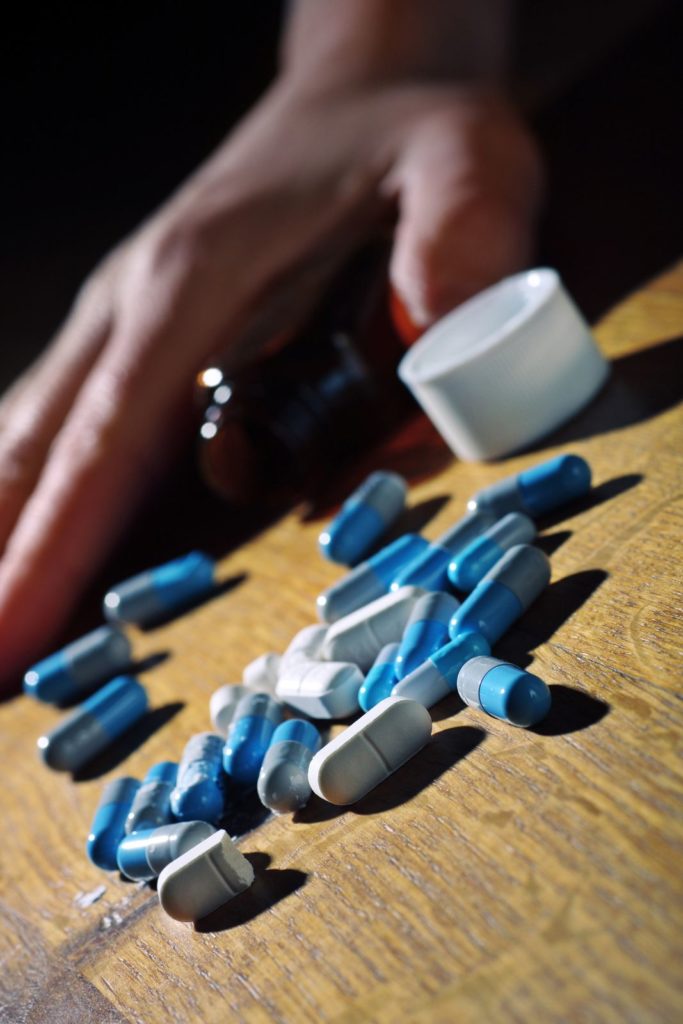
Prescription Drug Abuse Statistics
The federal Substance Abuse and Mental Health Services Administration uses an annual project called the National Survey on Drug Use and Health to assess year-to-year trends in prescription medication abuse across the U.S. Data from the latest reported version of this survey (covering the year 2012) indicates that young adults between the ages of 18 and 25 are clearly more likely to abuse prescription drugs than any other age group. The peak rate of abuse occurs in 18- to 20-year-olds; the rate falls substantially in 21- to 25-year-olds, but still remains relatively elevated. Medications most likely to serve as targets of abuse for young adults include stimulants prescribed for attention-deficit hyperactivity disorder (ADHD), opioids prescribed for pain relief or cough suppression and sedative-hypnotic tranquilizers prescribed as treatments for medically serious anxiety. Every year, thousands of young American adults between the ages of 18 and 25 die from a prescription drug overdose. This rate of overdose-related death outpaces the total rate for cocaine and heroin—two drugs of abuse well known for their overdose potential—as well as the overdose rate for any other illegal substance. For every person who dies, more than 60 require treatment in an emergency room and more than a dozen require subsequent hospitalization.
Motivations for Abuse
Young adults have a range of motivations for abusing prescription medications. One that’s fairly unique to younger people is a desire to gain an academic advantage by using prescription ADHD stimulants as “study drugs.” Other motivations are largely shared by abusers in other age ranges and include such things as a desire to get “high,” a desire to ease pain, a desire to avoid unpleasant states of mind, a desire to share social experiences with friends, a desire to avoid gaining weight and a desire to experiment with unfamiliar substances. Like people in other age groups, most young adults obtain the medications they abuse from a relative or friend, rather than from a stereotypical drug dealer.
Types of Young-Adult Abusers
In the study scheduled for publication in Drug and Alcohol Review, researchers from Purdue University, two branches of the City University of New York and the Center for HIV Educational Studies and Training used an examination of 404 young adults to identify types or categories of prescription drug abuse in this age group. All of the study participants were recruited from nighttime social gathering points such as bars and clubs. Each individual submitted basic demographic information (e.g., gender, socioeconomic status and racial/ethnic background). In addition, the researchers gathered information on each person’s exposure to prescription medication dependence/addiction, other substance-related issues and any separate mental health concerns. After analyzing all of the collected information, the researchers identified four categories of young-adult prescription drug abusers. These categories are “dabblers” who don’t regularly misuse prescription medications, people who mainly abuse prescription stimulants, people who mainly abuse central nervous system-depressing opioids or sedatives, and people who regularly and “extensively” abuse prescription medications. The researchers concluded that young adults in this last category have the highest level of exposure to dependence/addiction risks and also have the highest rates for other substance-related issues and separate mental health concerns. Conversely, young adults who “dabble” in prescription drug abuse have the lowest level of exposure to these problems. The two remaining categories have levels of exposure that fall somewhere between the regular abusers and the dabblers. The study’s authors believe that public health campaigns aimed at discouraging prescription drug abuse should incorporate the understanding that not all young adults have the same level of abuse involvement or the same level of risk exposure. They also believe that interventions for young-adult prescription abuse may achieve better results if they’re aimed specifically at individuals involved in one of the four patterns of abusive intake.

